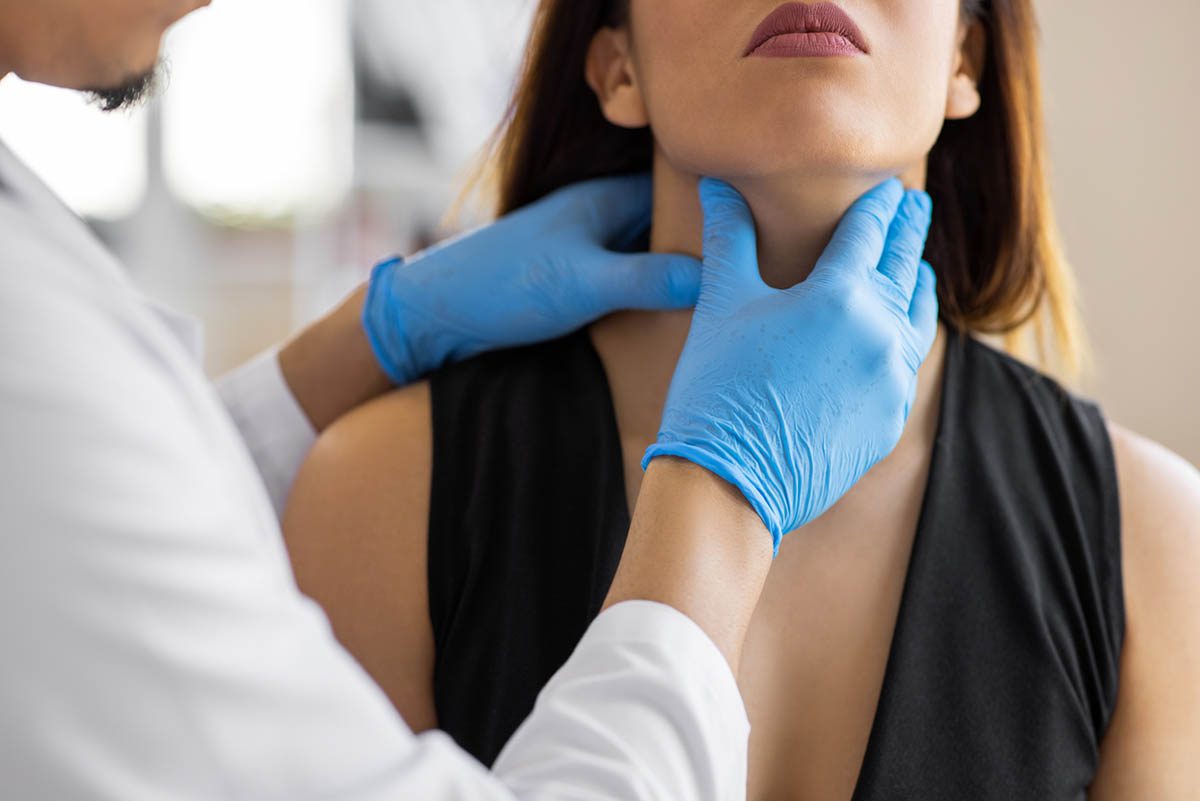
Lurasidone-Induced Mania
In 2013, lurasidone became the second drug to receive approval by the US Food and Drug Administration as monotherapy for bipolar depression.1-4 Compared to other antipsychotic medications, it is relatively well tolerated due to its low predisposition for sedation, drowsiness, weight gain, and cognitive slowing. It also has the advantages of a negligible effect on the QT interval1,3,5 and lower concern for teratogenic effects compared to valproic acid, making it an attractive single-agent pharmacotherapeutic option for the child-bearing population.2,3
Lurasidone-induced mania has been reported infrequently. In a randomized controlled trial3 of lurasidone 20 mg-120 mg for bipolar disorder, treatment-emergent mania occurred in 3.7% of patients in the 20- to 60-mg group, 1.9% in the 80- to 120-mg group, and 1.9% in the placebo group. Mean Young Mania Rating Scale (YMRS) scores showed a similar endpoint reduction in the lurasidone 20- to 60-mg group (21.1), the 80- to 120-mg group (20.7), and the placebo group (20.9), suggesting that mania may be a rare side effect of treatment with lower doses of lurasidone.3
There are a total of 12 reported cases of lurasidone-induced mania in the literature. Doan and colleagues6 identified 10 cases and described 5 of them in a case series. Their patients developed symptoms of acute mania over time periods ranging from 4-60 days. In all patients, symptoms resolved only after lurasidone was discontinued and alternate agents were initiated.6Kanzawa and Hadden7 described a case of a 23-year-old man with a history of bipolar disorder who presented with depression and Fregoli syndrome and became manic after receiving 4 doses of lurasidone 20 mg daily in the setting of nonadherence to valproic acid. He was stabilized on valproic acid and low-dose lurasidone.7 There was 1 additional case8 of pure hypersexuality in a young woman who was initiated on lurasidone and discontinued on risperidone, raising concern for hypomania.
Our patient presented in a depressive episode with psychotic features and became acutely manic after being started on lurasidone monotherapy.
Case Report
The patient is a 37-year-old woman with a questionable history of bipolar disorder who was brought in by emergency medical services from a local church for command auditory hallucinations to kill her children. Four days prior to admission to the hospital, she developed auditory hallucinations of a man and a woman whispering her name. She became frightened of the voices, which became loud and incessant.
The voices became increasingly distressing and louder and began to tell her to kill her children. She became paranoid, hearing footsteps behind her when she walked, but when she turned around, no one was there. Given the persistence of the voices, the patient presented to a church and spoke with clergy, who called emergency services, and she was brought to the hospital.
On arrival to the emergency department, she appeared tearful and remarkably anxious, with a disorganized thought process that comprised clang associations and an easy startle response. She was internally preoccupied.
Collateral information obtained from her husband revealed that she became depressed and irritable 2 weeks prior to admission. These symptoms were accompanied by insomnia and thought disorganization, including paranoia and aggression. She began dressing strangely, wearing boots in hot weather and dressing unprofessionally for a job interview.
Her prior psychiatric history included a diagnosis of bipolar disorder made 10 years ago and medication noncompliance. She had 3 prior hospitalizations, all for suicide attempts, and multiple psychiatric urgent care presentations, all lost to follow-up. She was first hospitalized at age 14 following a suicide attempt by overdose. She gave birth to her first son at age 23 and developed postpartum depression, leading to another hospitalization for an overdose on antidepressant medication. Child protective services were involved, and her son was taken out of her custody for a brief period. She was again hospitalized a year later when she developed suicidality and paranoia the day after an elective abortion. Her second son was born in 2008, and the patient developed depressive symptoms, leading to an urgent care visit that did not result in hospitalization. Chart review showed that the patient had multiple presentations with mood episodes, both manic and depressive, with auditory hallucinations, paranoid ideation, and ideas of reference. Her depressive episodes were characterized by sadness, suicide attempts, disrupted sleep, increased eating, feelings of guilt and hopelessness, and low energy. Her manic episodes consisted of euphoria, decreased need for sleep, pressured speech, distractibility, racing thoughts, impulsivity (including increased spending), and increased goal-oriented activities. Medication trials comprised fluoxetine, citalopram, quetiapine, olanzapine, risperidone, bupropion, valproic acid, and mirtazapine, all with limited response. She had been off of psychiatric medications for several years.
With regard to substance use, the patient reported occasional use of alcohol, cannabis, and cocaine, with her last use being 2 weeks prior to admission. The patient had no family history of psychiatric illness but mentioned that her grandmother used to “practice voodoo” on her as a child growing up in Central America, which the patient perceived as a traumatic experience. She was born in Central America as 1 of 5 children and was abandoned by her mother when she was 9 months old. She was raised by her grandmother and immigrated to the United States when she was 20 years old. She currently lived with her husband and 2 young children.
On arrival to the inpatient unit, the patient was disheveled and guarded, with a downcast attitude, depressed mood, and anxious and restricted affect. Her thought process was disorganized, with paranoid ideation and auditory hallucinations of voices calling her name.
There were multiple laboratory abnormalities, including leukocytosis of 15 K/μL, microcytic anemia with hemoglobin of 10.7 g/dL and mean corpuscular volume of 74.5 fL/cell, hypokalemia of 3.0 mmol/L, metabolic acidosis with bicarbonate of 18 mmol/L and anion gap of 21 mmol/L, and transaminitis with aspartate aminotransferase of 124 U/L and alanine aminotransferase of 59 U/L. Urine toxicology was positive for cannabis and cocaine. Serum toxicology results for salicylates, ethanol, and acetaminophen were negative. A urine pregnancy result was negative. An electrocardiogram was significant for normal sinus rhythm with prolonged QTc of 519 ms. Given those abnormalities, antipsychotics and mood-stabilizing medications were initially held, while electrolytes were repleted and QTc was monitored. She was treated with lorazepam 1 mg every 4 hours as needed for anxiety.
The patient was initially quiet and reserved, isolative to her room, and possibly somnolent from lorazepam. She slept at night and at times during the day. She was guarded and displayed a depressed, restricted affect with soft speech. She continued to endorse auditory hallucinations and was often observed to be responding to internal stimuli. Two days after admission and after normalization of laboratories and QTc, she was started on lurasidone 40 mg daily. The patient initially tolerated the medication well with no side effects. After a couple of doses, however, she started to exhibit insomnia, increased energy level, and odd behaviors, such as waking up at 3 in the morning and walking into other patients’ rooms. Lurasidone was then increased to 60 mg, but she became increasingly irritable and dysphoric, with more prominent psychomotor agitation, leading to her becoming verbally aggressive and having an altercation with another patient. She required additional lorazepam doses for agitation.
The patient’s irritability and agitation continued to escalate on the higher dose of lurasidone, and she had an altercation with a nurse in the middle of the night. She was subsequently noted to be hypersexual and made sexually inappropriate comments to one of the nurses. In light of her worsening symptoms, she required more frequent as-needed medications.
She continued to exhibit florid signs of mania, reporting that her mood was “much, much, much better,” while also displaying rapid speech, elevated and expansive affect, euphoria, hypersexuality, and hyperreligiosity (referencing Jesus several times in conversation). She thanked the team for giving her medication, which she described as “the magic pill—then BOOM!” She laughed repeatedly during the interview, often inappropriately, and was provocative with her treating psychiatrist.
Given worsening of her manic symptoms, lurasidone was discontinued and olanzapine was started at 5 mg nightly and up-titrated to 20 mg nightly, with progressive improvement of her symptoms over the course of the next few days. By discharge, the patient was in good behavioral control, with adequate sleep, euthymic mood, and no evidence of psychotic phenomena.
Discussion
We describe the case of lurasidone-induced mania in a young woman with a history of bipolar disorder with psychotic features who had taken no medication for several years. Our case expands on the small number of case reports6-8 of lurasidone-induced mania, as it describes a novel case of bipolar disorder with psychotic features in an individual who was comparatively treatment naive and had not recently been on any mood-stabilizing medication. This case is also consistent with what has been described previously in the literature about the association between postpartum events and a probable diagnosis of bipolar disorder.9,10 Furthermore, our patient presented with predominantly psychotic symptoms (ie, bizarre behaviors, command auditory hallucinations, paranoia, and persecutory delusions) over the previous 2 weeks.
For this patient, lurasidone was selected as monotherapy for bipolar disorder given its relatively benign side effect profile, especially concerning QT prolongation,1,3 and no known teratogenic effects given that this is a woman of reproductive age with a history of hypersexuality.11 For the first days in the hospital, the patient was quiet and isolative, but after receiving several doses of low-dose lurasidone, she became acutely manic. Although causality is impossible to determine, the patient’s behavior dramatically changed after starting lurasidone, suggesting a relationship. It should also be noted that the patient used cocaine prior to admission, so cocaine withdrawal may have contributed to her initial presentation but is unlikely to completely account for change in behavior.
There are hypotheses for a possible pharmacologic mechanism by which lurasidone could induce mania. Lurasidone is an atypical antipsychotic with high-affinity antagonism for D2, 5-HT2A, 5-HT7, and α2C adrenergic receptors. Lurasidone also exhibits low-affinity antagonism for D3, α2A, α1 adrenergic, histamine H1, and muscarinic M1 receptors as well as high-affinity partial agonism for 5-HT1A receptors.12 Lurasidone’s antagonism of 5-HT7 receptors has been hypothesized as a mechanism for its antidepressant effects. Thus, it has been proposed that the 5-HT2A antagonism as well as the absence of α1 antagonism could explain both the treatment of depression and induction of mania by disinhibiting dopamine release.6
Further research is necessary to understand the mechanism by which lurasidone precipitates mania as well as to identify which individuals may be more likely to develop this side effect.
Published online: July 11, 2019.
Potential conflicts of interest: None.
Funding/support: None.
Patient consent: The patient provided consent for the publication of her case, and proper de-identification measures were taken.
REFERENCES
1.Citrome L. Lurasidone for schizophrenia: a review of the efficacy and safety profile for this newly approved second-generation antipsychotic. Int J Clin Pract. 2011;65(2):189-210. PubMed CrossRef
2.Goodwin GM, Haddad PM, Ferrier IN, et al. Evidence-based guidelines for treating bipolar disorder: revised third edition recommendations from the British Association for Psychopharmacology. J Psychopharmacol. 2016;30(6):495-553. PubMed CrossRef
3.Loebel A, Cucchiaro J, Silva R, et al. Lurasidone monotherapy in the treatment of bipolar I depression: a randomized, double-blind, placebo-controlled study. Am J Psychiatry. 2014;171(2):160-168. PubMed CrossRef
4.Woo YS, Wang HR, Bahk WM. Lurasidone as a potential therapy for bipolar disorder. Neuropsychiatr Dis Treat. 2013;9:1521-1529. PubMed
5.Citrome L, Weiden PJ, McEvoy JP, et al. Effectiveness of lurasidone in schizophrenia or schizoaffective patients switched from other antipsychotics: a 6-month, open-label, extension study. CNS Spectr. 2014;19(4):330-339. PubMed
6.Doan LA, Williams SR, Takayesu A, et al. Case series reports on lurasidone-associated mania. J Clin Psychopharmacol. 2017;37(2):264-266. PubMed CrossRef
7.Kanzawa M, Hadden O. Case report of a switch to mania induced by lurasidone. Ther Adv Psychopharmacol. 2017;7(2):91-93. PubMed CrossRef
8.Reddy B, Das S, Ali M. A case of hypersexuality probably associated with lurasidone. J Clin Psychopharmacol. 2018;38(5):537-539. PubMed CrossRef
9.Bergink V, Rasgon N, Wisner KL. Postpartum psychosis: madness, mania, and melancholia in motherhood. Am J Psychiatry. 2016;173(12):1179-1188. PubMed CrossRef
10.Viguera AC, Whitfield T, Baldessarini RJ, et al. Risk of recurrence in women with bipolar disorder during pregnancy: prospective study of mood stabilizer discontinuation. Am J Psychiatry. 2007;164(12):1817-1824, quiz 1923. PubMed CrossRef
11.Damkier P, Videbech P. The safety of second-generation antipsychotics during pregnancy: a clinically focused review. CNS Drugs. 2018;32(4):351-366. PubMed CrossRef
12.Fountoulakis KN, Gazouli M, Kelsoe J, et al. The pharmacodynamic properties of lurasidone and their role in its antidepressant efficacy in bipolar disorder. Eur Neuropsychopharmacol. 2015;25(3):335-342. PubMed CrossRef
aDepartment of Psychiatry, Brigham & Women’s Hospital, Harvard Medical School, Boston, Massachusetts
*Corresponding author: Heather Burrell Ward, MD, Department of Psychiatry, Brigham & Women’s Hospital, 60 Fenwood Rd, Boston, MA 02115 (hbward@bwh.harvard.edu).
Prim Care Companion CNS Disord 2019;21(4):18l02406
To cite: Ward HB, Almeida M. Lurasidone-induced mania. Prim Care Companion CNS Disord. 2019;21(4):18l02406.
To share: https://doi.org/10.4088/PCC.18l02406
© Copyright 2019 Physicians Postgraduate Press, Inc.
Please sign in or purchase this PDF for $40.00.




